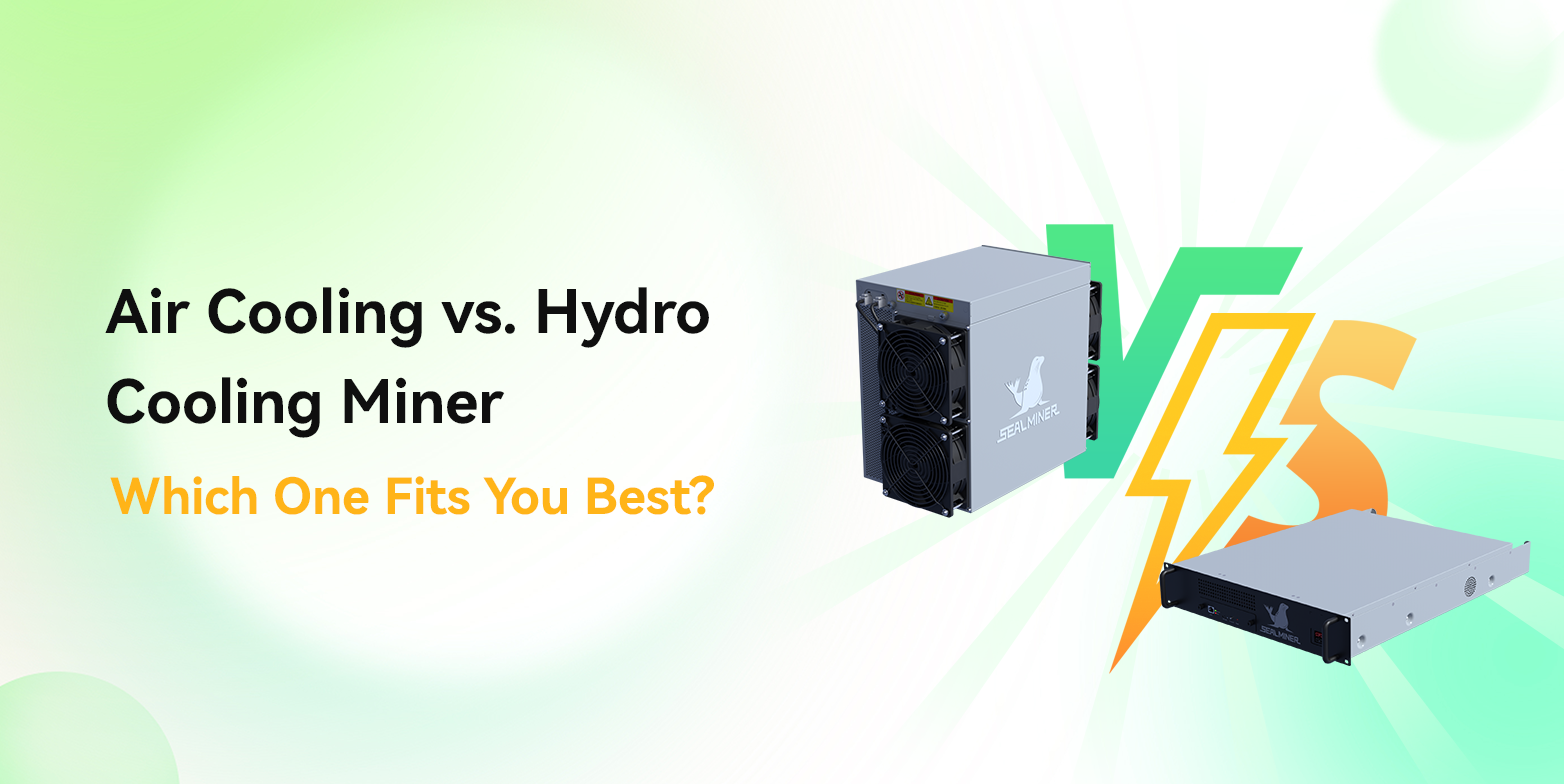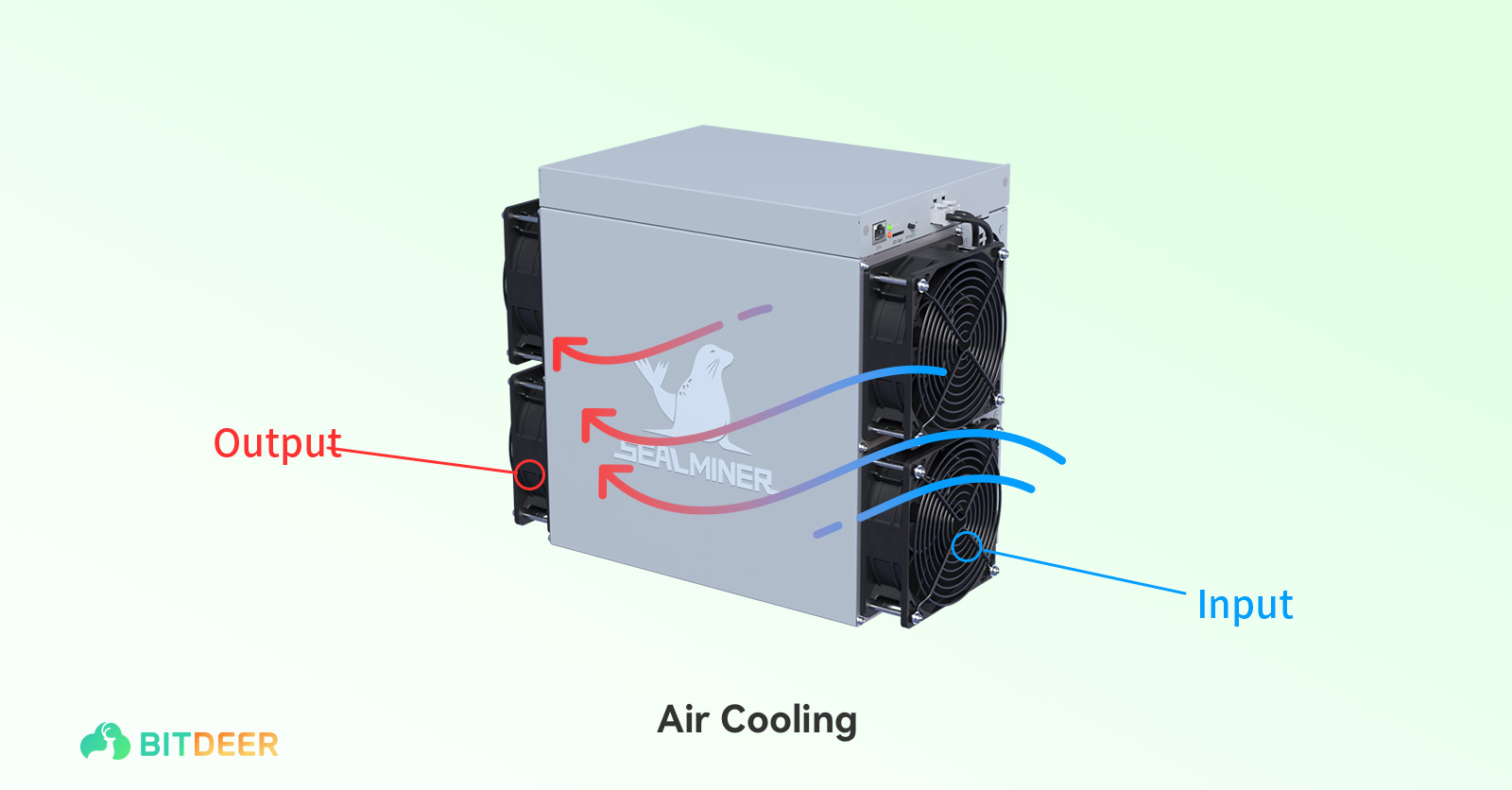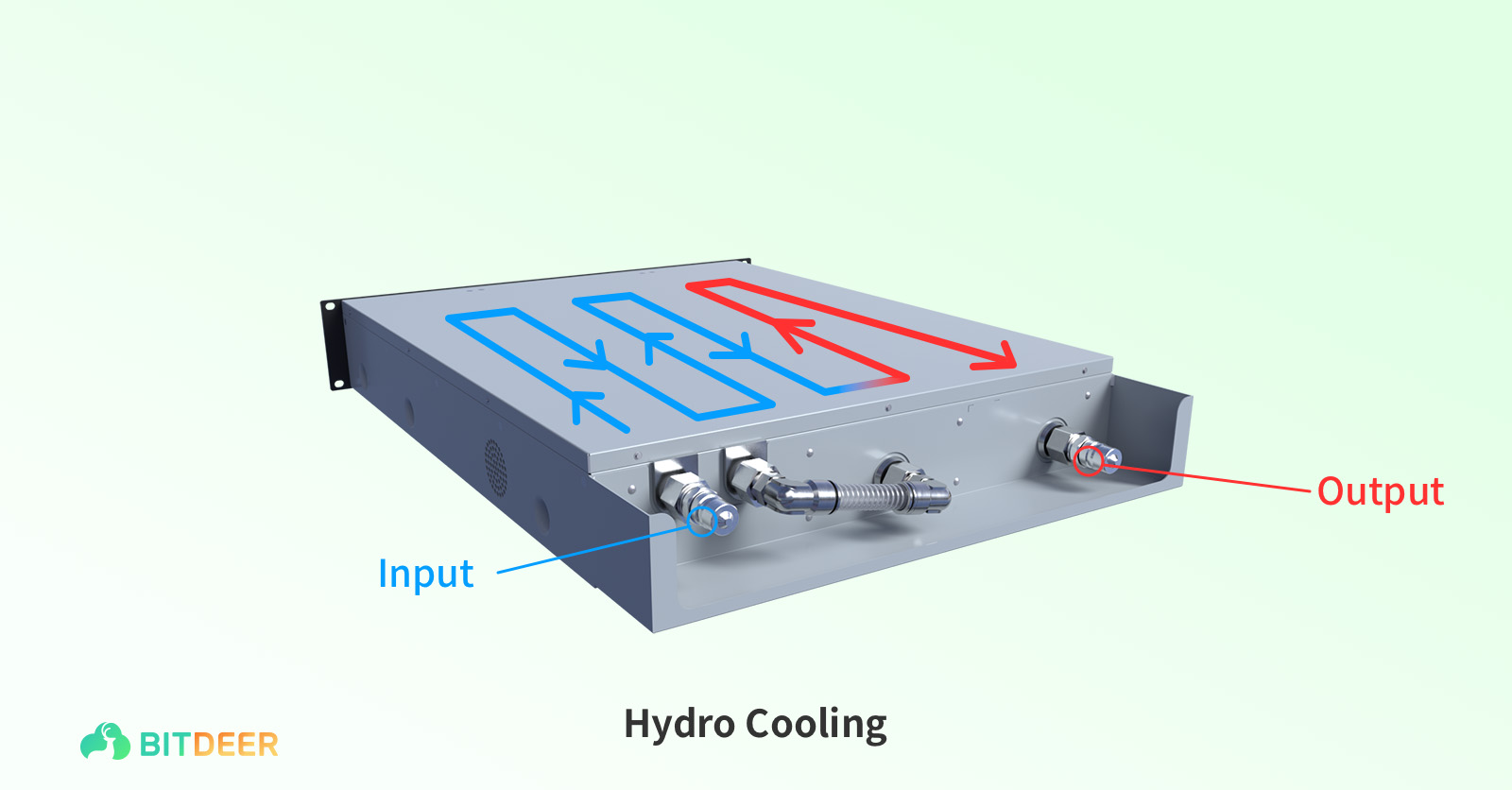
Air Cooling vs. Hydro Cooling Miner: Which One Fits You Best?
2025.10.06
This guide explains how both systems work, their pros and cons, and where each fits best, with practical notes from the Sealminer lineup.
When you step into crypto mining, the first decision isn’t just which machine to buy—it’s how to keep it cool. Mining is a nonstop, high-power process that generates serious heat. Without proper cooling, your rig can lose hash rate, damage chips, or shut down altogether. Air cooling or hydro cooling—which works better for Bitcoin mining? This guide explains how both systems work, their pros and cons, and where each fits best, with practical notes from the Sealminer lineup.
Are Miner Cooling Systems the Same as Computer Cooling?
On the surface, mining rigs and computers might look similar, but their cooling needs are on completely different levels. A home PC doing office work or browsing usually keeps its CPU or GPU around 40–60°C (104–140°F). Even under heavy gaming, anything past 80°C (176°F) is considered hot. A mining rig, however, runs dozens of ASIC chips at full throttle 24/7, and those chips can push 90°C (194°F) or more.
The big difference comes down to chip count and power draw. A computer might have one CPU and maybe a GPU or two, pulling a few hundred watts total. A miner can pack dozens—even over a hundred—ASIC chips, all crunching nonstop. That kind of setup easily pulls 3,000 watts or more. Think of a PC as a small office with a few people working. A miner is more like a factory floor with hundreds of workers running machines at once. Naturally, the heat output is on a completely different scale.
Without solid cooling, chips overheat within minutes. That means lost hash rate, damaged hardware, and shorter chip life. In mining, cooling isn’t a “nice to have”—it’s what keeps the entire operation alive.
What Is an Air-Cooling Miner and How Does It Work?
Air-cooling miners are the classic setup. They look like metal boxes with high-speed fans on both ends. Cool air gets pulled in from one side, hot air is pushed out the other, and heat sinks on the chips transfer the heat into the airflow. The design is simple: keep air moving, keep chips alive.
Air cooling is affordable, straightforward, and easy to maintain. It’s basically plug-and-play and works in almost any mining site. That’s why it’s the go-to for most small facilities.
But there are trade-offs. Fans are loud—often hitting 70+ decibels, about as loud as a vacuum cleaner that never shuts off. Air cooling also depends heavily on the environment. If your site doesn’t have good airflow or if temperatures and humidity run high, efficiency drops fast. In hot climates, you’ll notice hash rate performance takes a hit.

What Is a Hydro-Cooling Miner and How Does It Work?
Hydro-cooling miners look different from air-cooling rigs. Instead of big fans, you’ll see sealed housings with water line hookups. Inside, coolant flows through the system, pulling heat directly from the chips and carrying it out to external coolers like radiators or towers. Think of it as putting your miner on a liquid AC system.
The design has two big perks: it’s quiet, and it’s efficient. With no loud fans, noise is almost nonexistent. Hydro rigs are also built tightly to prevent heat buildup and allow for denser deployments in the same space.
Air-cooling rigs need bulky fans and exposed heat sinks in the airflow. Hydro rigs move heat out with liquid, which works faster and lets you stack more hash power into a smaller footprint. That’s why they’re often used in data centers where density and uptime matter most.
Of course, there’s a catch. Hydro cooling needs pumps, pipes, and external equipment. That drives up upfront cost and demands pro-level setup and maintenance. It’s why you see hydro rigs in large-scale data centers, not in personal setups or small mining facilities.

Air vs. Hydro: At-a-Glance Comparison
| Dimension | Air Cooling | Hydro Cooling |
| Cooling method | Fans and airflow | Liquid circulation |
| Cooling efficiency | Medium | High |
| Per-unit hashrate | Medium | High |
| Noise | Loud (≥70 dB) | Low to near-silent |
| Cost | Lower hardware cost; simple upkeep | Higher upfront; requires a water loop |
| O&M complexity | Simple; good for individuals or small facilities | Needs a professional team |
| Best fit | Small mining facilities, home setups, hosted cabinets | Data centers |
Pros and Cons of Air Cooling and Hydro Cooling
For beginners, picture air cooling like using a fan at home. It moves air, keeps things tolerable, and is cheap and easy to set up. But when it’s really hot, a fan won’t cut it. That’s the same with air-cooling rigs—they’re cost-effective in normal conditions but lose efficiency in extreme heat.
Hydro cooling is like central AC. It circulates coolant, drops temperatures more effectively, and runs almost silently. The trade-off? Bigger upfront cost and extra infrastructure, like plumbing in a cooling loop. It’s overkill for a single rig, but it makes sense when you’re packing hundreds into a data center.
Maintenance is another factor. Air cooling is simple—usually it’s just fan replacements or dust cleanup. Hydro systems add pumps, pipes, and coolant that can leak or clog, so the risks are higher if something fails. Still, in well-managed setups, hydro rigs aren’t necessarily less reliable—they just need a higher level of care.
Which One Is Right for You?
There is no single right choice. Start with power costs. If you have cheap electricity, say from hydropower, air cooling makes sense. Lower hardware and operating costs mean you hit ROI faster. If your power is pricey, stability and efficiency become more important, which is where hydro shines.
Next, look at environment. Air-cooling rigs work fine in well-ventilated warehouses or outdoor sites. But in sealed or hot climates like Southeast Asia or the Middle East, air cooling struggles. That’s why hydro systems dominate in data centers—constant uptime, regardless of weather.
Operational skill matters too. If you’re a solo miner or just starting out, you probably don’t want to mess with water systems. Air cooling is simpler. But if you’re running a professional team with access to data-center infrastructure, hydro is the smarter play.
Scale also tips the balance. A handful of rigs? Air-cooling is fine. Hundreds or thousands? Hydro is better—you get denser deployments, quieter operation, and fewer thermal headaches.
Finally, think about ROI models. Air cooling keeps costs low upfront, perfect for short-term miners or smaller sites. You can set up with basic air-cooling containers and get running fast. Hydro requires more investment but extends chip life and cuts hardware failure, giving steadier returns long term. It’s like buying cars: air cooling is the reliable economy sedan, while hydro is the luxury SUV—more upfront, but better performance and comfort down the road.
Since no two miners face the same power rates, climate, or goals, there’s no universal choice. To make it easier, here’s a scenario-based cheat sheet.
| User type | Recommended approach | Why it works |
| Individual / Beginner | Air cooling | Affordable and easy to set up. No water loop required. Great for hosted rigs or small mining facilities. |
| Small to mid-size mining facilities | Air cooling with some hydro | Air cooling is cost-effective in moderate climates. In hotter sites, add hydro units to stabilize temps. |
| Data centers | Hydro cooling | Higher upfront cost, but supports dense deployments, steady temps, and low noise at scale. |
| Long-term investors | Hydro cooling | Extends chip life, lowers failure rates, and supports steadier long-term ROI. |
| Short-term / budget users | Air cooling | Lower initial spend, faster payback, and flexibility to exit early. |
Choose a Trusted Bitcoin Miner with Bitdeer
With Bitdeer, you can go straight to the Sealminer A2 series, which offers both air cooling and hydro cooling for Bitcoin mining. For setup and operations, see the ‘Sealminer A2 Series Hydro Cooling: How to Install and Operate Safely’ and ‘How to Set Up Sealminer A2 Series Air Cooling – Full User Guide.’
Still deciding? Email [email protected] and our team will recommend the right model and a hosting plan for your situation.
*Information provided in this article is for general information and reference only and does not constitute nor is intended to be construed as any advertisement, professional advice, offer, solicitation, or recommendation to deal in any product. No guarantee, representation, warranty or undertaking, express or implied, is made as to the fairness, accuracy, timeliness, completeness or correctness of any information, or the future returns, performance or outcome of any product. Bitdeer expressly excludes any and all liability (to the extent permitted by applicable law) in respect of the information provided in this article, and in no event shall Bitdeer be liable to any person for any losses incurred or damages suffered as a result of any reliance on any information in this article.